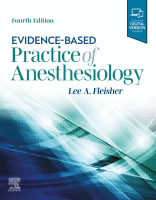Physical Address
304 North Cardinal St.
Dorchester Center, MA 02124

INTRODUCTION Hypertension affects approximately 45% of the United States (U.S.) population and is a leading cause of mortality both nationally and globally. In light of the high prevalence of hypertensive heart disease, the American College of Cardiology and American Heart…

INTRODUCTION Percutaneous coronary intervention (PCI) has revolutionized the management of coronary artery disease (CAD), initially with balloon angioplasty (BA) and subsequently with coronary stenting, both with bare-metal stents (BMSs) and with drug-eluting stents (DESs). Historically, the high incidence of coronary…

INTRODUCTION Battery-operated pacemakers (PMs) revolutionized the treatment of fatal electrical conduction abnormalities in 1958, just a few years after the invention of the transistor. With the maturation of this technology, PMs were designed to also provide atrioventricular synchronization, improve the…

INTRODUCTION In addition to its contractile function, the heart is also considered an endocrine organ capable of producing two natriuretic peptide hormones, atrial natriuretic peptide (ANP) and brain natriuretic peptide (BNP). Both hormones cause increased renal excretion of water and…

INTRODUCTION Surgery on a pregnant woman raises several novel concerns. These include the effect of surgery and anesthesia on the developing fetus and the potential to trigger preterm labor. The hazards to the fetus could come from teratogenic effects of drugs administered…

CHAPTER OUTLINE Introduction Options/Therapies Evidence Preoperative Radiologic Studies Preoperative Pulmonary Function Testing Preoperative Urine Analyses and Culture Preoperative Coagulation Studies Preoperative Hematocrit and Complete Blood Count Preoperative Serum Chemistry and Glucose Urine Toxicology Screen Electrocardiogram Pregnancy Testing Controversies/Areas of Uncertainty…

INTRODUCTION Postoperative neurocognitive disorder (PND) is a term recently proposed to describe a number of situations that occur up to 1 year after surgery and anesthesia; it aligns with other descriptions of neurocognitive disorders in the Diagnostic and Statistical Manual…

INTRODUCTION Although strokes can and do occur at any age, the incidence of stroke doubles with every decade after the age of 45 years, with three-fourths of all strokes in the United States occurring in people over the age of…

INTRODUCTION The preoperative assessment of a patient in need of elective noncardiac surgery is often a difficult task. There has been enormous controversy regarding the appropriate strategy for diagnosing and managing coronary artery disease (CAD) before elective noncardiac surgery because…

INTRODUCTION Preoperative cardiovascular risk assessment attempts to prospectively identify at-risk patients and allows targeted management to reduce perioperative cardiac complications. These complications include both “demand” events, in which perioperative stress increases myocardial oxygen requirements to a level that cannot be…